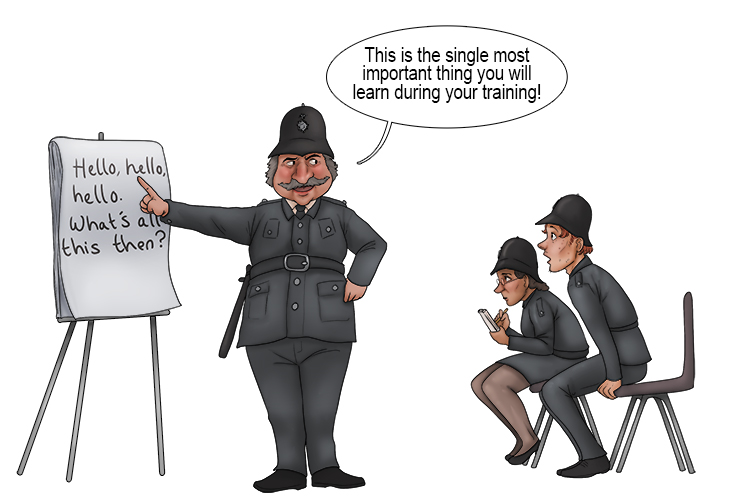Training – The process of increasing the knowledge and skills of an employee
(Pronounced tray-ning)
The meaning of the word training is obvious, but finding the perfect training programme for your business is very difficult.

Business training allows an employee to learn and develop new skills, abilities and knowledge to improve their performance.
There are many different types of training and a business has to decide which is the most important for them.
Induction
There are few companies now that don’t provide basic training immediately when you start working there. This very first day’s training is called an induction. Inductions vary from company to company depending on whether you are joining as a scaffolder, a police officer, or office clerk, but often include:
Where are the fire exits.
Where are the toilets.
Where you can eat.
A walk around the premises.
What their role is.
What the organisation’s goals are.
Company history.
Basic health and safety requirements.
Manual handling training.
Where to go for first aid.
Every company’s induction is different and would clearly be different depending on the job role.
On the job/hands on training
On the job training is when you learn how to do the job while you are working.
An example would be if you wanted to become a plasterer. You might start as a labourer mixing the plaster and then occasionally have a go at finishing or putting on plaster. The experienced plasterer will comment on what you have done and then complete the task to a higher standard, but day after day you become more and more competent. This is called on-the-job training.
Outside courses/lectures
Training courses and lectures take place off the job and are often run by third party training companies. These courses could take place as part of a training seminar or an ongoing series of lessons run by an educational institution such as a college. They can also result in an official certificate that indicates that the trainee has completed the course.
E-Learning
Online courses, tests and reading material are common ways that companies train employees. E-learning is cheap and flexible, so can be completed at any time. Employee inductions, compliance training and skill development can all be carried out online.
For example, an employer could set an online quiz that every new employee must take which covers safety protocol in their factory. Only after the employee has got all the questions correct will they be allowed to work.
Mentoring
A common form of training is mentoring. This is when an experienced member of staff advises a new member of staff on how to best carry out their job. For this system to work, the mentor needs to be readily available to be asked questions when the new employee encounters a problem.
Group discussions
Group discussions can be very useful for developing teamwork and ensuring that every member of the team understand their role and everybody else’s role. Problems can be voiced and resolved much more quickly with the whole team present.
Role playing
This training practice is usually included as part of induction training, most often for employees in customer-facing roles. Employees act out scenarios that may occur during work, with the experienced member of staff normally taking the role of the customer. Immediate feedback can be given to the employee after a scenario is acted out to ensure that when it comes to the real thing, they know what to do.
Toolbox talk
A short, informal meeting with staff before a work shift in which health and safety points are communicated by a manager or supervisor to workers. A building site foreman for example may gather the workers on the site to go over key safety procedures in a 10-minute talk before the work starts in the morning.
Case studies/Reading
Case studies typically present a real-world situation that the learner must analyse and understand. The case study situation will involve someone performing the job the learner has been employed to do, and may involve actions which are incorrect or correct. The trainee must be able to understand which actions within the case study are the correct ones that they should apply when working. Analysing case studies can be a good indication of an employee’s critical thinking skills.




